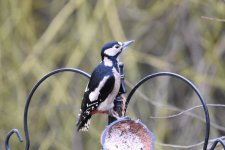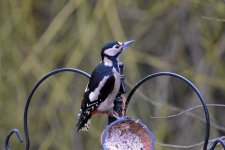shrek48
Well-known member
I have always used Auto for my settings as I struggle with manual settings. Wishing to try again here is my problem- I know that Aperture is light & DOF, so lower the number smaller the aperture etc. & that a lower number smaller the DOF etc ...
I know that shutter speed controls light exposure, and can freeze or stop blur on a moving object at say 1/100thok Got that much.
How you do determine what settings u need & make those changes while trying to take bird shots , because usually u have a very short time to capture the bird as they bugger off quickly!
Cheers !
I know that shutter speed controls light exposure, and can freeze or stop blur on a moving object at say 1/100thok Got that much.
How you do determine what settings u need & make those changes while trying to take bird shots , because usually u have a very short time to capture the bird as they bugger off quickly!
Cheers !









